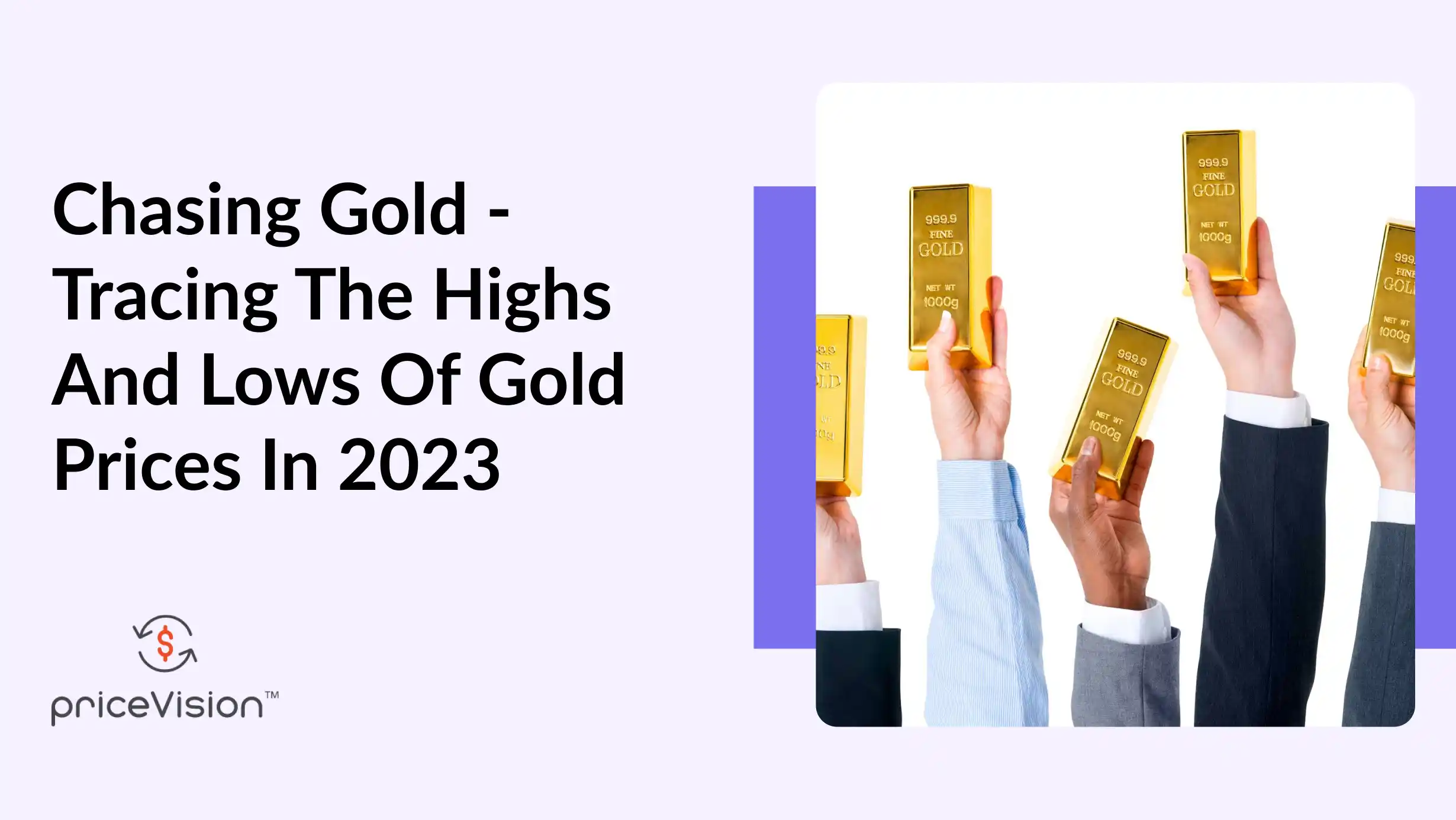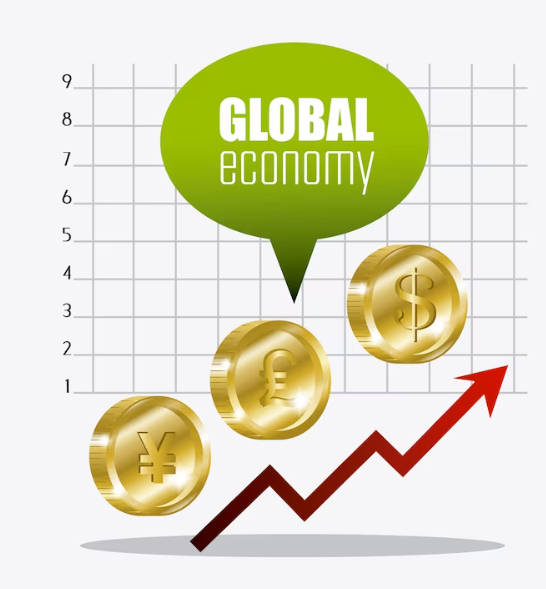Chasing Gold - Tracing the Highs and Lows of Gold Prices in 2023

Gold, a metal that has been widely associated with luxury, has held importance throughout the course of civilization. Its enduring allure, utility, in industries and reputation as a store of wealth have all contributed to its highly coveted status. As a result, fluctuations in the price of gold can significantly impact investors, economies and financial markets on a scale.
Understanding Gold as a Precious Metal
The Significance of Gold
Gold possesses a significance that has transcended numerous civilizations and historical periods. It has long been revered as a symbol of affluence, prosperity, and influence. In societies, gold played a role as an early form of currency that facilitated trade and stimulated economic advancement.
The allure of gold transcended boundaries as it held value in religious ceremonies and the creation of precious artifacts. Throughout history, the possession of gold represented status and influence, with rulers and nobles adorning themselves with ornaments and treasures. At times gold remains a highly coveted commodity for its inherent beauty and intrinsic value standing as a testament to its timeless appeal that resonates across the globe.
Gold as a Global Commodity
Gold holds significance as a valuable commodity. Its exceptional properties, such as its rarity, durability, and universal appeal contribute to its demand. During times of uncertainty and geopolitical tensions, gold often serves as an investment option.

It plays a role in markets with both investors and central banks considering it a reliable store of value and protection against inflation. Furthermore gold finds utility across industries like jewelry making, electronics manufacturing, and dentistry. As an asset gold remains an irreplaceable element in the global economy.
Factors Influencing Gold Prices
Supply and Demand Dynamics
The price of gold is greatly influenced by the interplay, between supply and demand. Gold's limited availability and timeless allure contribute to its worth as a metal. When investors seek a haven during times of uncertainty or inflationary pressures the demand for gold increases which can push prices higher. Additionally changes in demand, jewelry consumption and central bank purchases also impact the demand for gold. Factors like mining output and recycling rates affect the supply of gold further influencing price movements. The delicate equilibrium between supply and demand plays a role in determining the gold prices in commodity markets.
Economic Indicators
Gold prices can be influenced significantly by indicators. Factors, like inflation rates, interest rates, GDP growth and unemployment figures have the potential to affect investor sentiment and cause fluctuations in gold prices. When the economy is uncertain, or interest rates are low gold tends to be a safe haven investment. On the other hand, positive economic data might encourage investors to focus on assets, which could impact gold demand and prices. Therefore it's important to monitor economic indicators if you want to understand and predict movements in gold prices within the commodity market.

Geopolitical Factors
Geopolitical events, such as conflicts, trade disputes, and political instability, have a direct impact on gold prices. Investors perceive gold as a haven during times of geopolitical turmoil, leading to increased demand and upward pressure on prices. News related to international tensions can trigger sharp movements in gold futures.
And while gold is often considered to be a safe-haven asset during times of geopolitical tensions, Gold Avenue reports a possibility of sharp changes due to the Taiwan-China and the Russia-Ukraine disputes citing the 1970s Middle East conflict when gold prices went up by 37% in 1978 and 126% in 1979, among other geopolitical disputes.
Global Economic Conditions
The global economic conditions significantly affect gold prices. During periods of economic uncertainty or recession, investors often turn to gold as a haven asset, driving up its demand and price. Conversely, in times of robust economic growth, gold prices may experience downward pressure as investors seek higher-yielding assets.
According to Atlanta Gold and Coin, when the world economy is doing well, gold prices plateau. On the other hand, in a research conducted by Motilal Oswal, it was observed that in the last 50 years, the gold prices are inversely proportional to the US economy.
Central Bank Policies
The actions taken by banks to control the flow of money have an influence on the fluctuations of gold prices. When interest rates are adjusted, measures like easing are implemented or interventions occur in currency markets it can affect the demand for and worth of gold. Generally, when monetary policies are designed to be accommodating and interest rates remain low it tends to create an environment for gold prices.
Gold Prices in June 2023
In June 2023, the gold market experienced fluctuations that captured the attention of investors and analysts alike.
Throughout the year 2023 the price of gold has been on an upward trajectory experiencing an increase of up to 9% in April. As we approach the end of June, the overall rise in gold prices stands at 4% year to date, bringing it close to $1,920 per ounce in the market. Experts attribute this surge to factors such as fluctuations in interest rates, stock market movements and concerns surrounding the stability of the banking sector.
Reasons For the Hike in Gold Prices
Forbes reports that one key factor influencing the performance of gold this year has been the outlook for interest rates. The Federal Reserve has been actively raising interest rates for more than a year now as part of their efforts to combat inflation. Encouragingly, recent data on inflation suggests that these efforts are starting to yield results.
Additionally, an unexpected banking crisis that occurred in March had a tightening effect on credit markets. This event potentially contributed to a cooling down of the economy and a slowdown in inflation which subsequently affected gold prices.
Consequently, investors are now anticipating that the Federal Reserve will pause its rate hikes and shift towards implementing rate cuts than previously expected. Currently there is a 70% probability of another quarter percentage point rate hike, by May and a 56% likelihood of a rate cut by July.
Conclusion
In conclusion, June 2023 gold rates have had some ups and downs that caught the attention of investors and analysts. The price of gold has been on an upward trend throughout the year increasing by around 4% far and reaching nearly $1,920 per ounce.
This increase can be attributed to factors like rising interest rates, fluctuations in the stock market and concerns about the stability of the banking sector. However, what happens next with gold prices may depend on changes in interest rates. Investors are closely watching whether the Federal Reserve will cut rates or not and how it could potentially impact gold prices. Moreover, geopolitical events, global economic conditions, and central bank policies will also continue to have a role in shaping the direction of gold prices in the commodity market.
A plateauing effect in the price of gold is expected in the next half of this year since inflation has been brought in control and the rates have had a substantial hike through the first half of 2023.